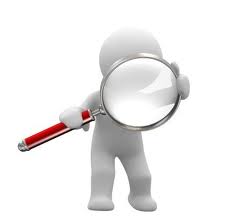Documenting Process and Workflow,
"What Gets Looked At Gets Fixed"
Simplifying & Enhancing Comprehension
If you question any team member on their greatest frustration with documentation it will always be the same, “it is too hard to understand”. Overcoming this problem is actually very simple. The human mind comprehends information visually and struggles to take that information out of purely text based documentation.
Therefore documentation should always be composed of both visual text based components. The visual components can be in the form of process or workflow flowcharts, pictures or photographs of inputs or outputs, and even possibly video of process completion steps. The textbasedcomponents should be detailed instructions on the completion of each step
When constructing documentation of any process or workflow the only goal that is important is to transfer knowledge and understanding in the least amount of effort possible to the user.
Documenting For Different User Groups
Different user groups within the organization will have different requirements of a set of process or workflow documentation.
These user groups can be broken down as follows:
- Executive, needs to understand the overall process not the exact detail in most cases,
- New User, needs understanding of the overall process as well as complete detail,
- Novice User, needs to confirm their understanding on process or detail steps periodically,
- Expert User, needs to confirm their understanding on process or detail steps periodically,
When reviewing your documentation, apply these different user groups requirements to confirm that the documentation meet’s that needs of all of these user groups.
Creating Documentation Guidelines
Creating documentation guidelines to create a consistent and replicable style of documentation throughout the firm is a cornerstone in improving comprehension understanding of the processes and workflows.
The documentation guidelines should include the following:
- A statement of the process,
- Date last revised,
- Compiled by whom,
- Who owns the process or workflow,
- Who uses the process or workflow,
- Where exceptions are to be escalated,
- Time required to complete,
- Diagram of the process,
- Triggers, what initiates or starts the requirement for a workflow
- Inputs, what are the inputs to the process, materials, documents, how do they arrive, where are they accessed from etc.
- Processing(Internal & External), as the workflow progresses how are things processed, decisions made, changed, updated, added to, trimmed, where are they stored to etc
- Outputs, what is the final set of outputs they may be the conclusion of this workflow or the start of another one, where are they output to, in what format etc
- Detailed written instructions of each step,
- Key measurements indicators,
- Photographs of specific outputs where required,
- Quick reference guides, optional
Team members at all levels will be able to understand cleaner and faster because they know where to look and what to expect to find.
Using Different Charting Methods
When completing process and workflow diagrams there are main methods used that have different views of the subject matter and should be used as the situation dictates.
Linear - a linear diagram of the workflow as it progresses with all decisions and steps, primarily used to represent the overall process. At each workflow step positions completing the task can be added.
Cross Functional - this type of diagram super imposes the process over a list of positions and moves the the process back and forth among the positions. These can be very useful but can further complicate the interpretation of more complex flows.
Using The "Deck of Cards" Theory For Managing A Firm
The deck of cards theory is an exercise in quickly changing a firm. If all the processes and procedures are documented you can easily do the following
- Create a position responsibilties list for any position by listing the appropriate processes or work flows,
- Make changes to position repsponsibilities by simply adding and subtracting aprroptiate processes or workflows,
- Easily combine, transfer, or create responsibilties by reshuffling the decks of processes and workflows.
Constant improvement has seen the whole process of reshuffling of staff, preparing new position responsibilities, and deploying reduced to an executive meeting and a few hours of paper work even in a substantial firm, thus allowing the team to adapt quickly to growth and or change issues.
Improving The Process
Once the processes that are actually happening are documented, opportunities will start to emerge for the process of improving them can begin.
For more on our Improving Processes ...click here
For further information or to speak with an Advisor Free Of Charge contact us: by email ... click here or call 888-980-7520
Thanking you in advance for the honour to be of service,
Constant Improvement Group
Workflow, Performance, & Innovation Leaders

Consulting, Support, Training
Home l About l Process l Performance l Innovation l Programs l Training l Resources l Contact


